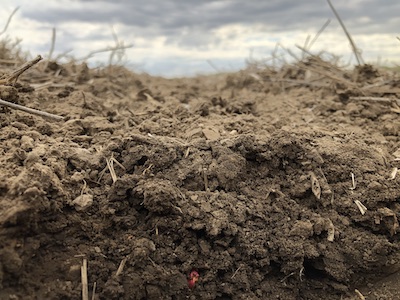Organic Material vs Organic Matter
Jan 31, 2022

Often times we think of organic matter as the plant and animal residues we incorporate into the soil. We see a field that is heavily blanketed with cornstalks and leaves after corn harvest and think that we are adding tons of organic matter to the soil. In reality, the residue after harvest is organic material and not organic matter. Organic material is anything that was alive and is now in or on the soil. For the organic material to become organic matter, it must be decomposed into humus. (Not hummus. There is a difference between humus and hummus.) Humus is organic material that has been converted by microbes into a resistant state of decomposition.
Hummus is what people eat with crackers and wine, according to Brittany. Organic material is unstable in the soil, changing form and mass readily as it decomposes. As much as 90 percent of organic material disappears quickly because of decomposition. One ton of cornstalks per acre will add 200 pounds of organic matter per acre. Organic matter is stable in the soil. It has been decomposed until it is resistant to further decomposition. Usually, only about 5% of organic matter mineralizes yearly. The rate of mineralization increases if temperature, oxygen, and moisture become favorable for decomposition, which often occurs with excessive tillage. It is the stable organic matter that is analyzed in a soil test.
Hummus is what people eat with crackers and wine, according to Brittany. Organic material is unstable in the soil, changing form and mass readily as it decomposes. As much as 90 percent of organic material disappears quickly because of decomposition. One ton of cornstalks per acre will add 200 pounds of organic matter per acre. Organic matter is stable in the soil. It has been decomposed until it is resistant to further decomposition. Usually, only about 5% of organic matter mineralizes yearly. The rate of mineralization increases if temperature, oxygen, and moisture become favorable for decomposition, which often occurs with excessive tillage. It is the stable organic matter that is analyzed in a soil test.